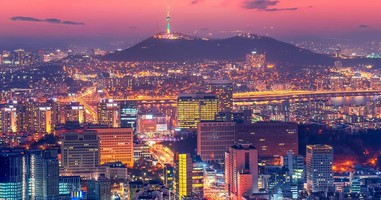
News
How to translate economic growth into the well-being of citizens
27 January 2021

President Kassym-Zhomart Tokayev’s speech on 11 January, its economic part to be precise, began with the following: “Incomes of all groups of the population should grow as the economy grows. This is an indisputable axiom, which does not work in our case... The socio-economic system created in the country has shown efficiency in ensuring the overall growth of national income, but at the same time it is inefficient in distribution”.
Is it so?
In the case of total income, this is a fair statement. Over 20 years, per capita GDP has grown in real terms by 2.5 times, and the monetary income of the population - by 4 times. And if in 2009 and 2016 the economic crisis was accompanied by a drop in income, then the state’s inclination to social justice in recent years completely changed the picture in 2020 (+4.3% to income at -3.8% of per capita GDP).
As for income distribution, it is a more difficult task. According to the Gini index, Kazakhstan is one of the most "equal" in the world - it ranks 14th among the Benelux and Scandinavian countries. The indicator of income differentiation is determined by a sample survey of 0.2% of the population. Judging by them, the income used for consumption is 14 trillion tenge. But there are macrostatistics of household incomes of 26 trillion - where does the difference of 12 trillion come from?
To understand differentiation in incomes indirectly, we can "feel" it through the context of regions. Average per capita income in Atyrau region is 3.2 times higher than in Turkestan (former South Kazakhstan). This difference was also observed 15 years ago. But only 3% of the population continues to live in the Atyrau region, and 16% lives in the Turkestan and Shymkent regions, nothing has changed.
Are there objective reasons behind this?
There are also natural factors behind the inefficient translation of economic growth into the well-being of citizens. They are especially well seen against the background of Russia, which is also a large developing post-Soviet country with raw materials. The difference is obvious: if only 35–40% of Kazakhstan's GDP is converted into household income, then in Russia it is 55–60%.
But not all Kazakhstani economy belongs to the Kazakhstanis. 12%, or $23 billion, needs to be subtracted from Kazakhstan's GDP to get the national income. In Russia - only 3%.
Not all Kazakhstanis are able to earn income. The share of children in the country is 29%, in Russia - 18%. Children do not work, but they participate in the calculation of per capita indicators. Household statistics are inexorable: the more children they have, the poorer they are.
Kazakhstan and Russia have different labor markets. The share of manufacturing in employment in Russia is twice as high as in Kazakhstan - this is the second largest industry there, while our manufacturing industry ranks only the sixth in our own economy. In Russia, the share of people employed in public administration, defense and health care is higher, and the wages are 2-3 times higher than the Kazakhstani wages. Even agriculture in Kazakhstan employs twice as many people, but with half the wages. An industrial country has more room for growth and income distribution than an agricultural country.
There are four conclusions from this: 1) the agrarian-raw material status in itself is a barrier to income distribution; 2) inequality is clearly higher than the results surveyed, but no one knows by what extent; 3) inequality exists not just within one society, but between entire parts of the country; 4) inequality is “conserved” locally, as people simply do not migrate to more “rich” locations.
How do developed countries fare?
Let's take the United States as an example - a large rich country, its population is also dispersed along the perimeter. The income gap between the richest state and the poorest one is only two times, even though the “poorest” state is still 5.5 times richer than the Atyrau region.
As a frame of reference, let's take the four pillars of the Heritage Foundation's Index of Economic Freedoms - the rule of law, open markets, effective regulation, and the fiscal size of government. The market economy exists along this sequence of factors.
In the 19th century, the United States was economically free as much as possible. Property was protected, internal markets were open to competition, business and the public were free to choose their activities and places of residence. The central government did not intervene and was busy with wars. The country quickly industrialized and grew rich, massively opening up new opportunities and jobs. Millions of migrants have arrived in the United States.
The first restrictions affected the openness of markets. Cartels and the ensuing rise in prices sparked the first antitrust law. After several “banking panics,” the Central Bank, i. e. the Federal Reserve, emerged. High import duties collected directly by the central government were introduced to finance the central government.
After the Great Depression, there were massive restrictions on the regulation and fiscal size of government, which intensified during the Cold War. The central government fought poverty and unemployment through the growth of the bureaucracy, industry regulation, setting minimum prices and wages, controlling production, creating a pension system and social benefits. This was accompanied by an increase in taxes.
As expected, everything ended in long-term stagflation - a simultaneous rise in prices and unemployment. Therefore, the neo-liberal agenda won the intellectual discussions concerning country’s economic issues, and their ideas formed the basis of the "Reaganomics" of the 1980s. The new system was built on the belief that “trickle-down effect,” i. e. the reduction of the tax and regulatory burden on corporations, leads to more investment, job creation for the lower strata of the population and multiplying effects in all spheres of the economy. The changes did not have the results expected, as profits were funneled offshore and into unrelated assets, creating price bubbles. Incomes rose, but inequality increased.
The financial crisis of 2007-2008 turned the course towards neo-liberalism. The US government is becoming more and more "leftist" - from increasing the availability of medicine for the poor to outright support of the "neo-Marxists".
At the same time, the United States continues (so far) to be "excellent" in market openness and regulatory efficiency, and "strikingly good" in terms of the rule of law. In terms of fiscal size, the United States is already "losing", hence the whole discussion around taxes and budget spending – we can observe the purest redistributive agenda in the style of "whom we tax" and "for whom we seek benefits." The “extreme left” is also venturing into other areas, such as protecting property rights (“can I rob you if I need the goods more”) or labor freedom (mandatory presence of a woman on the board of directors).
However, all these discussions are partly productive, because the market economy has already scattered people across economic spheres and geography. Those who could not find themselves in it remained unsuccessful, and the discussion about inequality centered around them. The basic economic balance has been achieved, but it does not suit the society, so they are looking for a new one.
Inverted discussion pyramid
Kazakhstan is an "excellent student" in terms of the fiscal size of the government, "strikingly good" in terms of regulatory efficiency, but a "loser" in terms of the market openness and the rule of law - the basic foundations of a good economy.
There is no economic equilibrium yet. We do not know what the real prices of the most important goods and services are. We do not know how much people are willing to consume, and the price segments of buyers is unknown. And most importantly, we do not know whether these organizations and their owners are good enough to offer us goods and services.
Worst of all, even through official statistics, we do not understand the extent of inequality, the nature of wealth accumulation, and the portraits of rich and poor families. Entrepreneurs have been talking about kleptocracy behind the scenes before, and the president de facto talked about this as a problem to solve to the whole country. It turns out that the key markets are monopolized using the state as a tool for enrichment.
And since property did not come through competition, efficiency, and creativity, two problems of inequality arise. The first is that there is no interest in developing the supply chain, so there is no spillover of income further into the economy. The second is the avoidance of the fiscal burden due to the state apparatus’ overbearing control, hence the insufficiency of state spending for professional bureaucracy, "power" and social blocs.
Therefore, surprise-surprise, under the current conditions, the classic market economy will distribute income more efficiently. But we must start with its foundation - the rule of law: it is the protection of private property and the guarantee of the execution of contracts through the courts, the honesty and transparency of the executive through political competition in the legislature.
It will be necessary to remove artificial barriers to the openness of markets - this is the privatization of state-owned enterprises in competitive sectors, the elimination of bans on foreign trade, favoritism in key industries.
Instead of a complex system of social support, one should move to a direct and monetary one for the disabled. To understand where they are and how many of them there is, it will be necessary to reform the state statistics, taking the recent population census as a basis. It is better to put out social fires immediately, otherwise the reforms will stop at the very beginning.
And if, as a result of all this, the population does not begin to live better and more evenly, a simpler concept of fiscal policy can be discussed, that is, “take away and divide” policy.
all publications












